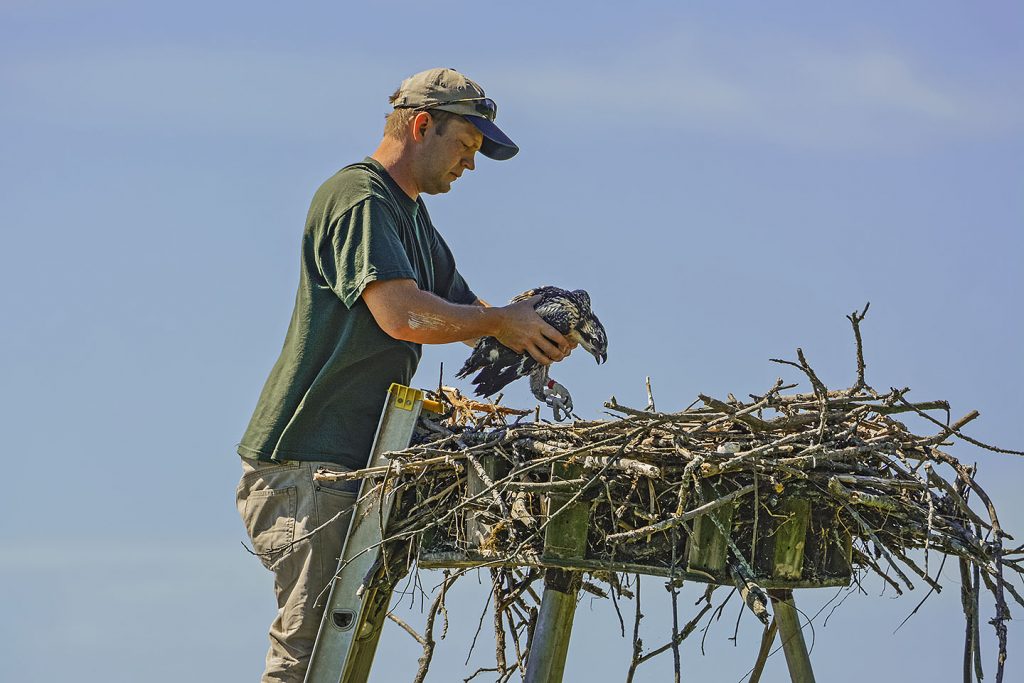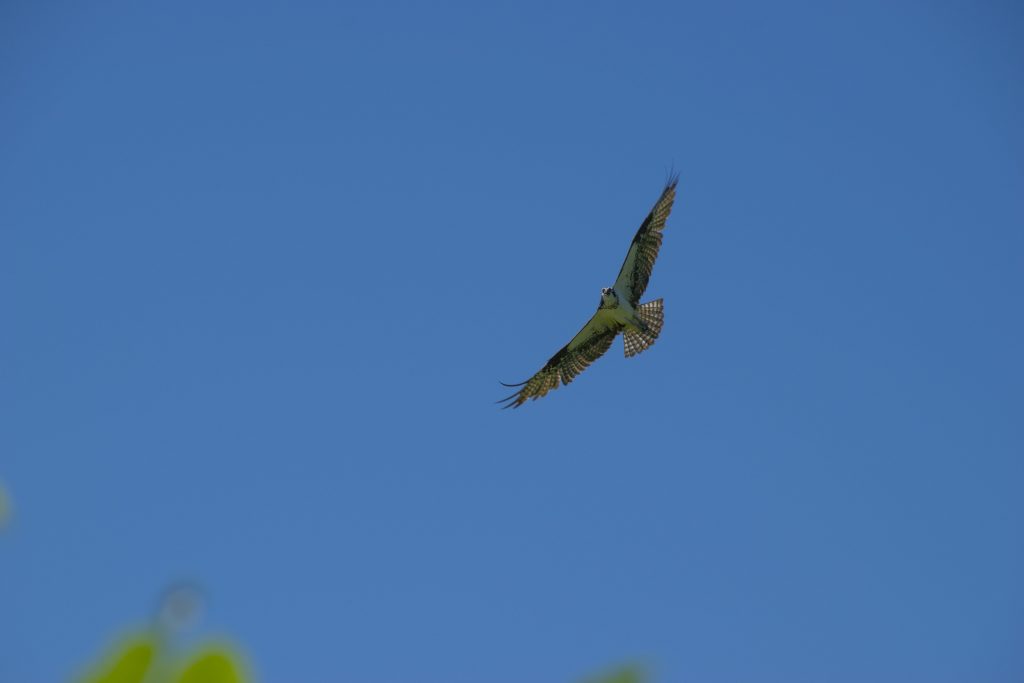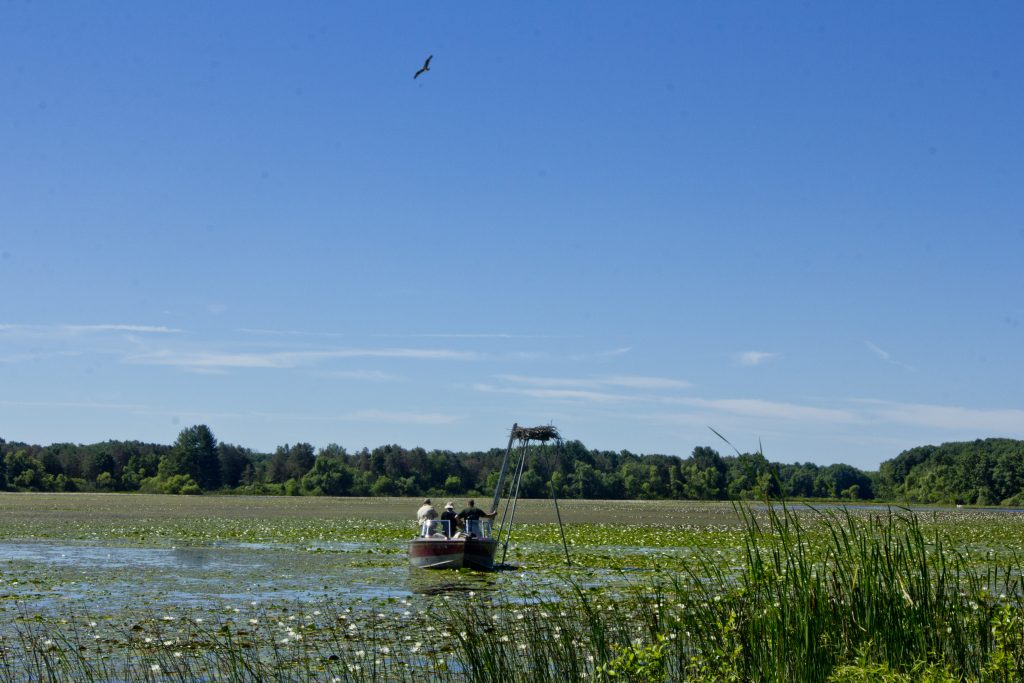
DNR Wildlife Biologist Ken Kesson places a young osprey in its nest at Lux Arbor Reserve (Photo credit: Roy Van Loo, Jr.)
The State of Michigan Department of Natural Resource‘s (DNR) first osprey (Pandion haliaetus) banding in Southwest Michigan took place on Monday, June 27 at Lux Arbor Reserve, a KBS research property. A team of Wildlife Biologists from the DNR banded two osprey chicks at a nest on Middle Crooked Lake in Delton, assisted by Lux Arbor Manager Mark Manuszak.
Banding osprey chicks gives the DNR the opportunity to monitor the birds’ location and activity, and gain information about the rare species’ survivorship. The bands indicate the identity of the bird, as well as the bird’s age. The chicks banded at Lux Arbor were estimated to be about five weeks old.
This osprey banding was part of a larger project with ospreys that the DNR has been conducting, primarily in Southeast Michigan. DNR wildlife biologists and their partners (including over 200 volunteers!) have been monitoring ospreys in Southern Michigan for almost twenty years.
“Back in the late 1990s, they started to release birds from northern Michigan into the southern part of the state, in an attempt to re-establish this rare species,” said DNR Wildlife Biologist Ken Kesson.
This project has been tremendously successful already. In 2002, there was only one active osprey nest in all of southern Michigan. Today, thanks to the work of the DNR and their volunteers and partners, there are over 50 active nests.
“It’s been a big success story,” said Julie Oakes, DNR Wildlife Biologist. “We like the opportunity to work with partners. We hope to continue our efforts over here [in Southwest Michigan].”
Kesson is taking charge of the DNR’s osprey banding and monitoring efforts in Southwest Michigan, and is seeking volunteers to assist with monitoring osprey nests. “We’re excited to continue this, and to be able to add to some scientific knowledge that’s been collected over the years by the DNR and some great partners throughout the area,” said Kesson.
“It was a great learning experience to partner with another like-minded organization who realizes utilizing MSU’s natural resources for research, outreach, education and stewardship is a wise endeavor,” said Manuszak of the banding.
To learn more about this project, contact Mark Manuszak or visit the DNR’s website.



A legacy of conservation; a commitment to sustainability.
3700 E. Gull Lake Drive
Hickory Corners, MI 49060
(269) 671-5117
info@kbs.msu.edu